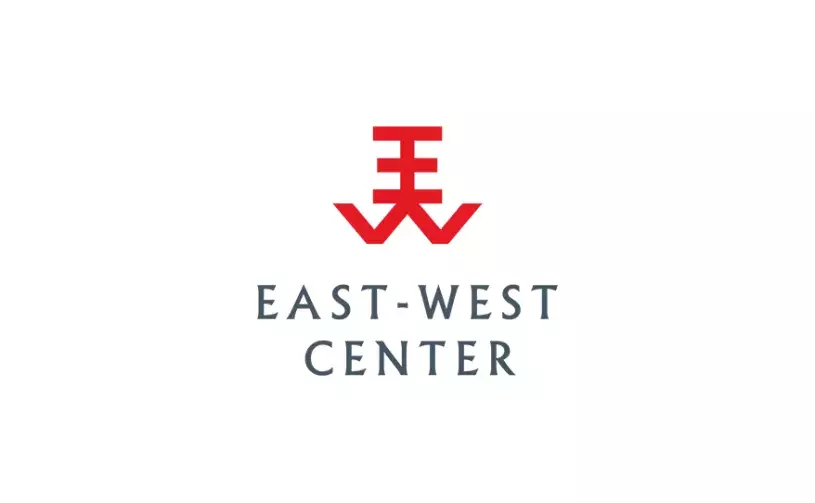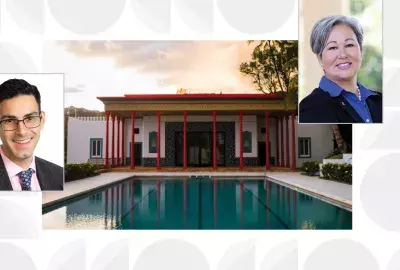Error message

By Charles E. Morrison and Mark Nuttall
HONOLULU (September 27, 2019)—In the summer of 2019, Greenland received considerable media attention for two developments: Its large ice sheet saw record rates of surface melt with potentially devastating impacts on the oceans, and Donald Trump suggested that the United States should look into buying the island from Denmark. Both illustrate key features of the changing Arctic—the amplified impact of climate change and concerns over the return of geostrategic competition after a post-Cold War period of international circumpolar cooperation.
The story of the proposed American purchase broke just as a Greenland session was taking place at the August 2019 North Pacific Arctic Conference, held at the East-West Center and cosponsored by the Korea Maritime Institute. Although Trump’s offer was rejected by both Denmark and Greenland, the publicity it received piqued interest in the history and political status of the world’s largest island.
Greenland’s political evolution
Greenland became a Danish colony as the result of exploration, missionary activity in the scattered Inuit settlements, and the establishment of a trade monopoly in the early 18th century. During the period of Danish colonial rule, Greenlanders began to develop a sense of nationhood. To comply with U.N. decolonization efforts, Denmark made Greenland a county in 1953 and then granted it “Home Rule” in 1979.
The Self-Government Act of 2009 was a significant further step, providing Greenland’s people with a high degree of autonomy under their own democratically elected government. It also acknowledged Greenland’s nationhood and right to choose independence. The notion of buying the territory was thus out of step with Greenland’s political evolution and aspirations and ignorant of its place as a constituent—and increasingly autonomous—part of the Kingdom of Denmark.
In response to Trump’s suggestion, the Danes were quick to point out that Greenland’s resident population of just over 56,000 has the right to determine its own future. Recent polls suggest that Greenlanders overwhelmingly aspire to eventual independence. But it is not an immediate political priority because Greenland lacks the financial and human resources necessary to maintain the population’s current standard of living on its own.
To alleviate this shortfall, Denmark provides a block grant and other support of about $750 million a year, accounting for one-third of Greenland’s gross domestic product (GDP) and 60 percent of public expenditure. Denmark is also responsible for Greenland’s defense and foreign policy. The catch is that the Self-Government Act provides that the Danish block grant will disappear were Greenland to declare independence.
Economic development
In the early years of self-government, Greenland had hoped to replace Danish subsidies with revenues from large natural-resource projects, based on the Greenlandic government’s ownership of marine, land, and subsurface resources. This last includes iron ore, lead, zinc, gemstones, gold, uranium, oil and gas, and several rare earths. In 2013, to pave the way for a promising large-scale mining project, the government repealed legislation that had banned uranium exports.
For a variety of reasons, neither uranium mining nor any other large-scale project has yet taken off. Commodity prices have plummeted, the costs of exploitation in Greenland are high, and bureaucratic and political approval processes have been slow and cumbersome. Many Greenlanders have also expressed skepticism. Big projects could bring in large numbers of foreign workers and have long-term environment, health, and social consequences. The government has been criticized for not spelling out the benefits, costs, and risks convincingly.
Greenland’s government has shifted its development focus to less controversial smaller projects as well as socio-economic issues that have been intensified by globalization and climate change. The government continues to pursue natural-resource projects, including offering new oil and gas exploratory blocks, developing a ruby mine, giving approval to a zinc mine, and encouraging niche resource industries such as exporting sand, gravel, and drinking water. Tourism is a promising industry that has been growing in recent years, one reason that Greenland seeks to build more gateway airports. And fishing still provides Greenland’s largest export income by far.
In contrast to controversial resource-extraction projects, Greenlandic political parties largely agree on health and education priorities. The stressful transformation of traditional life, including urbanization, has been associated with high rates of suicide among young people, domestic violence, and migration abroad, drawing away some of Greenland’s most promising talent.
Geopolitics, climate change, and U.S. interests
Although there is no military threat to Greenland, which is protected by NATO-partner Denmark and hosts the U.S. Thule Air Base, the Trump purchase proposal reflected U.S. concerns about Chinese influence. China’s share of foreign direct investment in Greenland is perhaps 10 percent of the total, and the Chinese have been cautious about large-scale investments. However, Chinese companies have expressed interest in helping Greenland finance and construct new airports, leading to U.S. pressure on Denmark to provide alternative funding.
While rejecting purchase, Greenland’s government affirmed that it is “open for business.” There is much to build on. Greenland, Denmark, and the United States have a positive history of partnership, including U.S. administration of Greenland during World War II. There are also opportunities to enhance mutual interests. The Trump Administration plans to establish a consulate in the Greenlandic capital of Nuuk, a direct cargo-shipping route is being opened up, and there is cooperation in training mineral experts. The United States could provide more educational scholarships for young Greenlanders and collaborate on schemes that go some way to meeting the island’s socio-economic challenges.
The most important way that Greenland will affect the United States and the rest of the world is through the effects of climate change. The world’s second largest ice sheet after Antarctica covers about 80 percent of the island, and ice-sheet melt accounts for about one-fifth of current sea level rise. Were Greenland’s entire ice sheet to melt, which would take centuries, it would add some 20 feet to sea levels. Related effects include the thawing of permafrost and consequent release of methane gases as well as ocean acidification processes that could potentially make catastrophic climate change unstoppable.
As part of a broader climate policy, the United States has an important role to play in Greenland along three broad dimensions. The first is to improve scientific cooperation to better understand the speed and effects of climate change: Observation of changes on the ground in Greenland can greatly assist international scientific inquiry. The second is to help Greenlanders adapt to a changing climate. And finally, the United States can help Greenland by providing leadership in developing sound, science-based approaches to addressing and mitigating climate change at the global level.
###
Charles E. Morrison is an Adjunct Senior Fellow and former President of the East-West Center where he focuses on Asian international politics. He can be reached at [email protected]. Mark Nuttall is the Henry Marshall Tory Professor of Anthropology at the University of Alberta, specializing in Greenland and the Arctic. He can be reached at [email protected].
Download a pdf version of this Wire article.
The East-West Wire is a news, commentary, and analysis service provided by the East-West Center in Honolulu. All or any part of the Wire content may be used by media with attribution to the East-West Center or the person quoted. To receive Wire articles via email, subscribe here. For links to all East-West Center media programs, fellowships and services, see EastWestCenter.org/Journalists.
The full list of East-West Wires produced by the Research Program is available on the East-West Center website at EastWestCenter.org/Research-Wire. For more on the East-West Center Research Program, see EastWestCenter.org/Research.
The East-West Center promotes better relations and understanding among the people and nations of the United States, Asia, and the Pacific through cooperative study, research, and dialogue.
Series editors:
Derek Ferrar
[email protected]
Sidney B. Westley
[email protected]
The views expressed are those of the authors and do not necessarily reflect the policy or position of the East-West Center or any organization with which the authors are affiliated.
By Charles E. Morrison and Mark Nuttall
HONOLULU (September 27, 2019)—In the summer of 2019, Greenland received considerable media attention for two developments: Its large ice sheet saw record rates of surface melt with potentially devastating impacts on the oceans, and Donald Trump suggested that the United States should look into buying the island from Denmark. Both illustrate key features of the changing Arctic—the amplified impact of climate change and concerns over the return of geostrategic competition after a post-Cold War period of international circumpolar cooperation.
The story of the proposed American purchase broke just as a Greenland session was taking place at the August 2019 North Pacific Arctic Conference, held at the East-West Center and cosponsored by the Korea Maritime Institute. Although Trump’s offer was rejected by both Denmark and Greenland, the publicity it received piqued interest in the history and political status of the world’s largest island.
Greenland’s political evolution
Greenland became a Danish colony as the result of exploration, missionary activity in the scattered Inuit settlements, and the establishment of a trade monopoly in the early 18th century. During the period of Danish colonial rule, Greenlanders began to develop a sense of nationhood. To comply with U.N. decolonization efforts, Denmark made Greenland a county in 1953 and then granted it “Home Rule” in 1979.
The Self-Government Act of 2009 was a significant further step, providing Greenland’s people with a high degree of autonomy under their own democratically elected government. It also acknowledged Greenland’s nationhood and right to choose independence. The notion of buying the territory was thus out of step with Greenland’s political evolution and aspirations and ignorant of its place as a constituent—and increasingly autonomous—part of the Kingdom of Denmark.
In response to Trump’s suggestion, the Danes were quick to point out that Greenland’s resident population of just over 56,000 has the right to determine its own future. Recent polls suggest that Greenlanders overwhelmingly aspire to eventual independence. But it is not an immediate political priority because Greenland lacks the financial and human resources necessary to maintain the population’s current standard of living on its own.
To alleviate this shortfall, Denmark provides a block grant and other support of about $750 million a year, accounting for one-third of Greenland’s gross domestic product (GDP) and 60 percent of public expenditure. Denmark is also responsible for Greenland’s defense and foreign policy. The catch is that the Self-Government Act provides that the Danish block grant will disappear were Greenland to declare independence.
Economic development
In the early years of self-government, Greenland had hoped to replace Danish subsidies with revenues from large natural-resource projects, based on the Greenlandic government’s ownership of marine, land, and subsurface resources. This last includes iron ore, lead, zinc, gemstones, gold, uranium, oil and gas, and several rare earths. In 2013, to pave the way for a promising large-scale mining project, the government repealed legislation that had banned uranium exports.
For a variety of reasons, neither uranium mining nor any other large-scale project has yet taken off. Commodity prices have plummeted, the costs of exploitation in Greenland are high, and bureaucratic and political approval processes have been slow and cumbersome. Many Greenlanders have also expressed skepticism. Big projects could bring in large numbers of foreign workers and have long-term environment, health, and social consequences. The government has been criticized for not spelling out the benefits, costs, and risks convincingly.
Greenland’s government has shifted its development focus to less controversial smaller projects as well as socio-economic issues that have been intensified by globalization and climate change. The government continues to pursue natural-resource projects, including offering new oil and gas exploratory blocks, developing a ruby mine, giving approval to a zinc mine, and encouraging niche resource industries such as exporting sand, gravel, and drinking water. Tourism is a promising industry that has been growing in recent years, one reason that Greenland seeks to build more gateway airports. And fishing still provides Greenland’s largest export income by far.
In contrast to controversial resource-extraction projects, Greenlandic political parties largely agree on health and education priorities. The stressful transformation of traditional life, including urbanization, has been associated with high rates of suicide among young people, domestic violence, and migration abroad, drawing away some of Greenland’s most promising talent.
Geopolitics, climate change, and U.S. interests
Although there is no military threat to Greenland, which is protected by NATO-partner Denmark and hosts the U.S. Thule Air Base, the Trump purchase proposal reflected U.S. concerns about Chinese influence. China’s share of foreign direct investment in Greenland is perhaps 10 percent of the total, and the Chinese have been cautious about large-scale investments. However, Chinese companies have expressed interest in helping Greenland finance and construct new airports, leading to U.S. pressure on Denmark to provide alternative funding.
While rejecting purchase, Greenland’s government affirmed that it is “open for business.” There is much to build on. Greenland, Denmark, and the United States have a positive history of partnership, including U.S. administration of Greenland during World War II. There are also opportunities to enhance mutual interests. The Trump Administration plans to establish a consulate in the Greenlandic capital of Nuuk, a direct cargo-shipping route is being opened up, and there is cooperation in training mineral experts. The United States could provide more educational scholarships for young Greenlanders and collaborate on schemes that go some way to meeting the island’s socio-economic challenges.
The most important way that Greenland will affect the United States and the rest of the world is through the effects of climate change. The world’s second largest ice sheet after Antarctica covers about 80 percent of the island, and ice-sheet melt accounts for about one-fifth of current sea level rise. Were Greenland’s entire ice sheet to melt, which would take centuries, it would add some 20 feet to sea levels. Related effects include the thawing of permafrost and consequent release of methane gases as well as ocean acidification processes that could potentially make catastrophic climate change unstoppable.
As part of a broader climate policy, the United States has an important role to play in Greenland along three broad dimensions. The first is to improve scientific cooperation to better understand the speed and effects of climate change: Observation of changes on the ground in Greenland can greatly assist international scientific inquiry. The second is to help Greenlanders adapt to a changing climate. And finally, the United States can help Greenland by providing leadership in developing sound, science-based approaches to addressing and mitigating climate change at the global level.
###
Charles E. Morrison is an Adjunct Senior Fellow and former President of the East-West Center where he focuses on Asian international politics. He can be reached at [email protected]. Mark Nuttall is the Henry Marshall Tory Professor of Anthropology at the University of Alberta, specializing in Greenland and the Arctic. He can be reached at [email protected].
Download a pdf version of this Wire article.
The East-West Wire is a news, commentary, and analysis service provided by the East-West Center in Honolulu. All or any part of the Wire content may be used by media with attribution to the East-West Center or the person quoted. To receive Wire articles via email, subscribe here. For links to all East-West Center media programs, fellowships and services, see EastWestCenter.org/Journalists.
The full list of East-West Wires produced by the Research Program is available on the East-West Center website at EastWestCenter.org/Research-Wire. For more on the East-West Center Research Program, see EastWestCenter.org/Research.
The East-West Center promotes better relations and understanding among the people and nations of the United States, Asia, and the Pacific through cooperative study, research, and dialogue.
Series editors:
Derek Ferrar
[email protected]
Sidney B. Westley
[email protected]
The views expressed are those of the authors and do not necessarily reflect the policy or position of the East-West Center or any organization with which the authors are affiliated.
East-West Wire
News, Commentary, and Analysis
The East-West Wire is a news, commentary, and analysis service provided by the East-West Center in Honolulu. Any part or all of the Wire content may be used by media with attribution to the East-West Center or the person quoted. To receive East-West Center Wire media releases via email, subscribe here.
For links to all East-West Center media programs, fellowships and services, see www.eastwestcenter.org/journalists.







